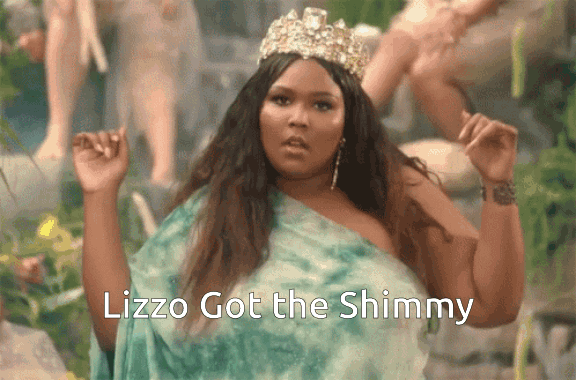Do/Don't Do - Taking It Slow 4 - Spine Side to Side
LIzzo and Baby Yoda - source: Lizzo instagram. Yoda doesn’t really shimmy, but Lizzo do!
Do/Don't Do - Taking It Slow - 4 - Spine Side to Side
“Learning must be slow and varied in effort until the parasitic efforts are weeded out: then we have little difficulty in acting fast, and powerfully.”
Allowing Movement, Not Resisting Movement
Based on Pressing Ribs from Alan Questel
The thoracic and cervical (chest and neck) vertebrae bend forward and back, rotate around the center axis, and - the topic this week - side bend.
Side bending is often an underdeveloped skill. Formally trained ballerinas can’t do it: their ribs are too tight. Lots of desk sitters have no clue, even if they need to reach down to pick up a dropped pencil: who knew ribs could move anyway?
Side bending is what keeps us centered and balanced as we dig our paddles deep in the kayak. It’s what keeps our side long and hip from kicking out in the golf swing. It’s the secret to triangle asanas. And, of course, if you have your shimmy on, bring it on from the spine and ribs.
This time, keeping with the theme of ‘moving just one vertebra’ we will lie on our sides and practice lifting just one vertebra - and its associated ribs- towards the ceiling and the floor. The focus will be on the spine, and where the ribs meet in the front at the sternum.
To increase our sensitivity, we will visualize two sets of long, thin muscles; in the front the rectus sternalis, running down the sides of the sternum, and the erector spinae, the long, slender muscles running along the spine responsible for pulling the vertebrae together.
We begin with the middle ribs, then the lower ribs - noting the connection to the pelvis - and, finally, the mysterious upper ribs that wrap under the shoulder blades and armpits. We will feel into the long muscles that ‘mirror’ each other on the front and back.
We have done variations this lesson in the past: In the “Orchestra and Balcony” series (reference to the hit number from “A Chorus Line”), we approached the ribs as one big fan that opens out on one side and closes down on the other. For fun facts about fans and the fan language of Ye Olde British Court, click here. This page also has Science Nerd Candy bowl links for the muscles of the back.
Set Up:
Side Lying on a mat, with enough ‘cheek’ support so that your nose is parallel to your sternum, and your chin is neither cocked toward the ceiling or jamming into your neck. A rolled towel or bolster between the legs will keep your low back relaxed. This is a one-sided lesson, so choose your most comfortable side!
OR seated sideways on a flat-bottom chair with a back, knees level with hips. A folded towel might be helpful for leveling the knees and hips, and to sit on for comfort. Just nothing too soft - you will lose the ‘mirror’ of the chair.
How You Might Feel After This Lesson: Deeply Relaxed with a supple and supported spine; Tuned into the subtle differences of vertebral action side to side; Aware of which combinations of rib, hip and head bending are cohesive, and which block things up; Ready to shimmy, paddle, swing a stick, try that asana again with new clues.
For new student registration, Click Here
If you have a Wednesday 9:30 am or 6:30 pm class registration, keep using it. If you were registered for the 12:00 pm Wednesday session, you’ll need to register. Registered, paid students receive the lesson recording link on Thursday. $40/month, $15/single lesson. PayPal: jackisue@aol.com Venmo: @Jacki-Katzman Or check to Jacki Katzman, PO Box 116, Bethlehem, NH 03574




